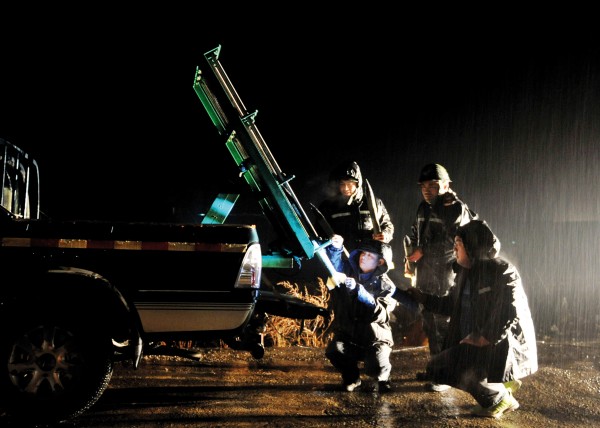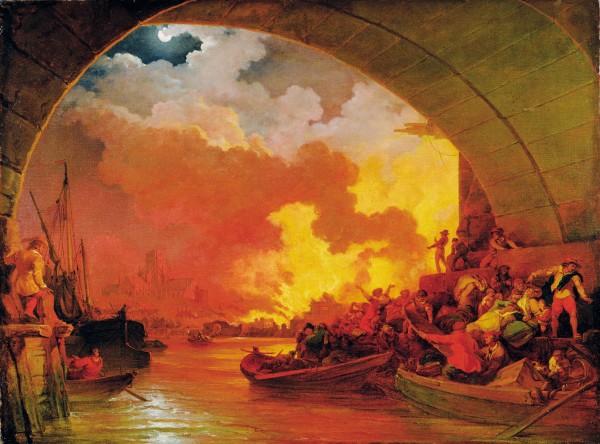Blame it on El Nino
Sixty-four millimetres of rain fell in Auckland City on July 25 this year, and somewhat more in the Hunua Ranges, lifting the water storage lake levels to over 50 per cent of capacity. It also helped lift the rainfall for the month to 186 mm, which made this the first month since June 1993 to have above-average rainfall.The run of low rainfall months added up to the lowest total rainfall over 18 months in the Hunua Ranges since 1928, when records began.
What has caused this dry spell? Climatologists look to two things: the eruption of Mount Pinatubo, which has been associated with coolerthan-average temperatures over much of the world, and an El Nino phase of the Southern Oscillation.The Southern Oscillation is a giant see-saw in atmospheric pressure between the south-east Pacific near Tahiti and Easter Island and the area from Indonesia to northern Australia.
In the negative, or El Nino, phase of the Southern Oscillation the pressure over Tahiti is lower than average and the pressure over Darwin is higher than average. The sea surface temperature is also above average in the eastern half of the tropical Pacific, and the easterly trade winds are lighter than normal and may even reverse direction.El Nino tends to be associated with abnormally persistent southwesterlies over New Zealand and lower-thanaverage rainfall over the north and east of the country.
However, it only indicates a trend. You cannot blame the fall of every raindrop, or its failure to appear, on the state of the Southern Oscillation. In the El Nino of 1986-87, for example, there was a lot of rain in eastern areas such as Hawkes Bay. Also, in the last 12 months of the current El Nifio, there has been plenty of rain in Canterbury, as can be seen in the graph of Christchurch’s rainfall.
What has been unusual with this El Nino is the length of time it has lasted, causing some scientists to speculate that it may have been prolonged by some effect of the Pinatubo eruption. Two previous long-lasting El Nifios have also brought significant dry spells to Auckland, in 1912-15 and 1942-43.
There is also some debate as to whether the current El Nino has already finished. Although the atmospheric pressures at Tahiti and Darwin still show a departure from normal, the tropical sea surface temperatures and the trade winds do not. So there is uncertainty over what will happen in the next few months El Niiios start in a variety of ways. The strongest El Niiio in the last 100 years occurred in 1982-83, and although there was a large eruption of the El Chinchon volcano in Mexico in 1982, it came after the El Nino event had started. It has been suggested that this El Nino may have been initiated by higher-than-average snowfall over Europe and Asia in the preceding northern hemisphere winter.
Snow covering the ground acts like a mirror, reflecting incoming sunlight back to space before it can warm the ground. The snow also uses up heat when it melts, and more heat is needed to evaporate the water back into the atmosphere, where it forms cloud, which also reflects some incoming sunlight back into space.
The end result is that the Asian land mass is slower to heat up in summer than normal, and this causes a weaker monsoon than normal. This, in turn, weakens the trade winds over the western Pacific. The normal-strength trade winds over the eastern Pacific then pile up warm water in the central Pacific and this eventually leads to a large area of high sea surface temperatures in the eastern tropics, which triggers an El Nino.
The role of Mount Pinatubo’s volcanic eruption in the current El Nino is subject to current research. The effect of past volcanic eruptions is also a matter of debate, but there are interesting correlations. For example, the four worst famine-producing harvest failures in northern Japan since 1599 were associated with volcanic ash clouds. Last year Japan had its worst rice harvest in 50 years, and had to import Australian rice.
The extent of an eruption’s influence on the weather is thought to depend on how much sulphur there is, and how high it is blown. The sulphur turns to sulphuric acid in the atmosphere and forms a thin cloud high in the stratosphere, which will spread around the whole world if the eruption is within 20 degrees latitude of the equator. This cloud reflects some of the Sun’s radiation back into space, thus cooling the Earth.
One of the most spectacular volcanic eruptions in human history occurred in the Aegean about 1450 B.C. when the island of Stentorian blew up, overwhelming the Minoan civilization based on the island of Crete. The amount of rock and ash blown into the atmosphere has been estimated as more than five times that from the Krakatau eruption of 1883, and the dust cloud produced may have lowered summertime temperatures in the far north by as much as three or four degrees.
Pollen analysis in the Canadian north has shown that about this time the northern limit of the forest, right across Canada, retreated 200 to 400 kilometers away from the Arctic and never returned. This event was accompanied by widespread fires, presumably started by lightning strikes on the dead standing timber. Afterwards, tundra became established and remains to this day.
In Scandinavia, this was a time when spruce came to replace trees that preferred a warmer climate. Some trace of these events may be found in the Norse legend of Fimbulvinter as recorded in the Edda poem written about 1220 A.D. by Snorri Sturluson. In the poem, he records a time when “snow drives from all quarters with a biting wind; three such winters follow one another and there is no summer in between.”This is followed by a great fire, which again could be the burning of thousands of dead trees killed by the cold weather.
The largest volcanic eruption of the last 200,000 years was the massive Toba eruption in Sumatra 73,500 years ago. Recent calculations suggest that this may have caused land temperatures in the zone 30° north to 70° north to have been 5 to 15°C colder than normal, leading to a “volcanic winter” similar to the proposed winter effects of a nuclear war.
The Toba eruption occurred as the last Ice Age was beginning, and dramatically intensified its onset. Because the Ice Age had already begun, it has been suggested that sea level fall may have contributed to triggering the eruption itself, by reducing the weight of water pressing down on an unstable magma chamber.
Volcanic eruptions in the 1700 s and early 1800 s have also been blamed for prolonging the Little Ice Age that started in the 14th century and lasted into the 19th century. Eruptions in Iceland and Japan in 1783 were followed by a series of summer droughts and cold winters in Europe. By the eve of the French Revolution food shortages were so bad that a French labourer was spending 88 per cent of his income on bread alone.
In April 1815, the volcano Tamboro in the East Indies erupted, sending an estimated 15 cubic kilometres of solid matter into the atmosphere. The ash cloud joined with clouds from previous large eruptions of other volcanoes in 1812 and 1814.
It was followed in 1816 by the summer that never was, when snow fell in the United States as far south as 42 north. Crop failures in many areas were followed by disease. The typhus epidemic of 1816 -19 was the most extensive in the history of Europe. There was an outbreak of the plague in south-east Europe and the eastern Mediterranean, and the first great worldwide cholera epidemic started in Bengal. Combined with the famine, this was one of the greatest worldwide disasters associated with climate.
At one remove, the effects of these events can still be felt today. The clouds of sulphuric acid high in the sky made striking sunsets which were recorded by painters such as Turner. And the disasters of 1816 are said to have inspired Mary Shelley to write the novel Frankenstein.

















